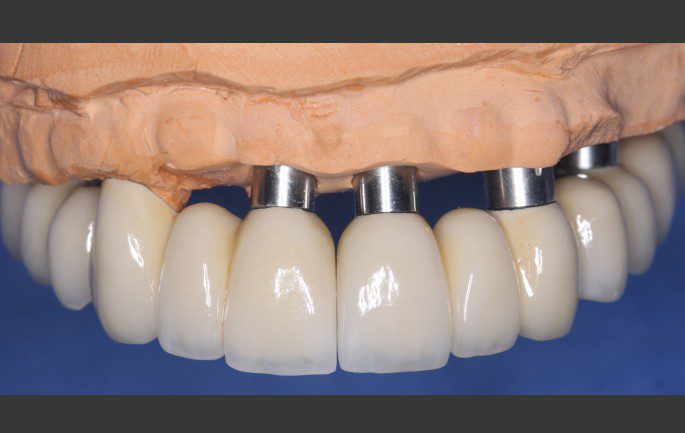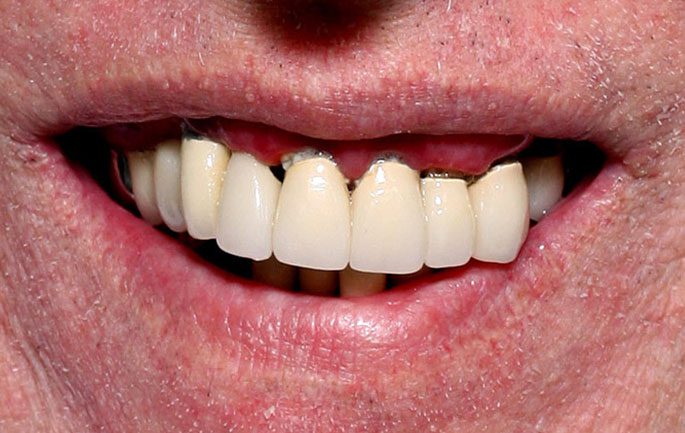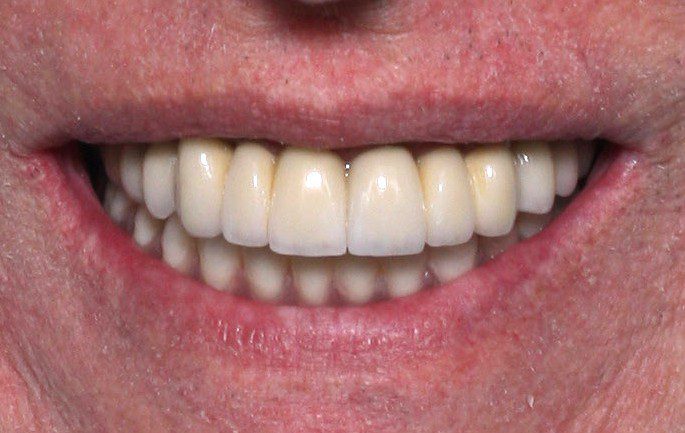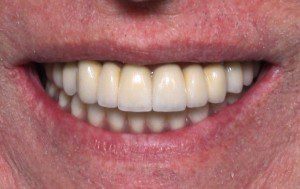
1 of 14
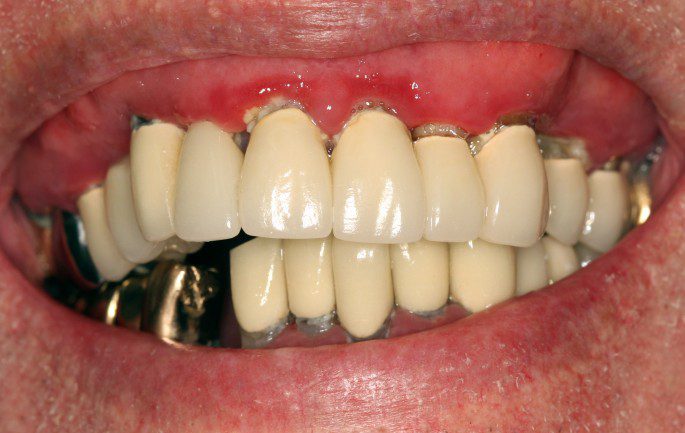
Pre-treatment view of patient who had spent a lot of time and money on crowns, bridges and root canals but continued to be plagued by rampant cavities.
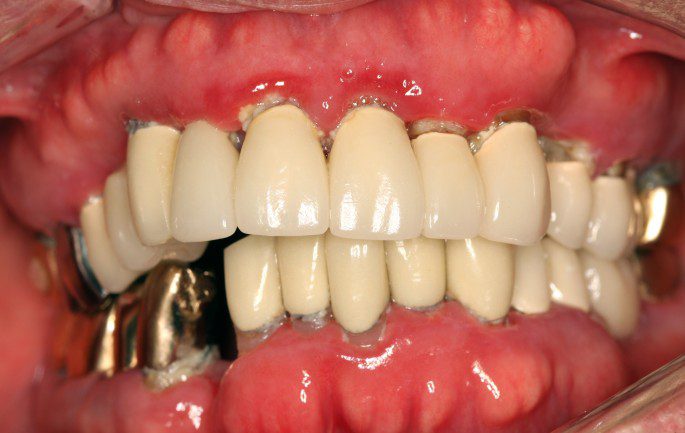
Close-up view of teeth. Due to inadequate home care the extent of the cavities is too severe to save the teeth. Most patients reach a point where they have spent so much time and money that they realize repeating the same act will lead to the same end. So, most patients are relieved to hear that dental implants cannot decay. Dental cavities (caries) can only effect the organic material of which teeth are comprised. Dental implants are made of titanium which is inorganic and cannot decay. After this much time and money this patient already knew he needed dental implants.
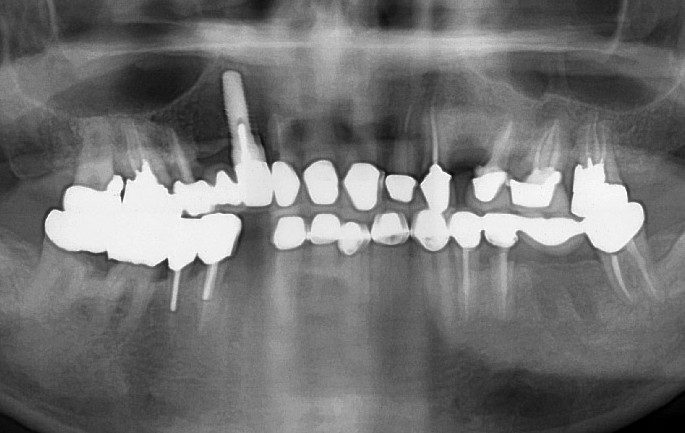
Panoramic x-ray of the pre-treatment mouth. This x-ray is not designed to accurately diagnose cavities but they are so large they can be seen, even here.
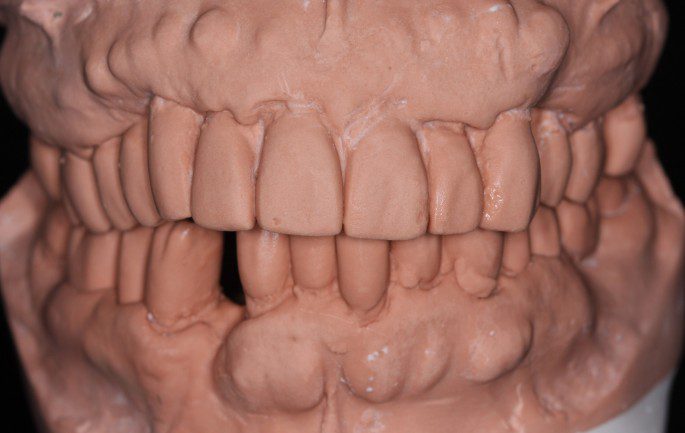
As is always the case for complex dental treatment, a thorough work-up is essential to a great outcome. These are called diagnostic casts or pre-operative models. These are placed on dental articulator to simulate the human anatomy of the jaws the TMJ (joint) and the teeth. Prosthodontists use this to thoroughly understand tooth position, occlusion (bite dynamics) and to evaluate the volume of bone where teeth are present and missing. These casts (models) are duplicated before the teeth are moved or manipulated so there are always pre-treatment casts to evaluate.
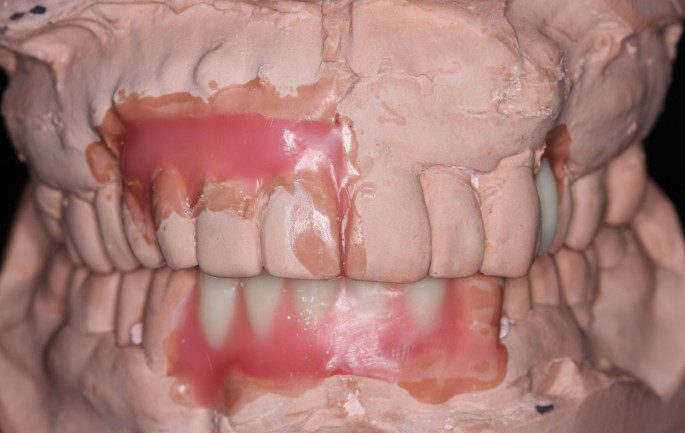
On duplicate casts, the diagnostic wax-up (treatment projection) is completed. This is where tooth position and bite issues can be managed, proactively. It is at this stage that the prosthodontist determines what is possible, how it's possible or even if it is not possible to give the patient the treatment they desire. THERE IS NO SUNSTITUTE FOR THE THIS STEP! Only through the diagnostic work-up and wax-up can the best possible outcome be rendered. Many, many dentists embark on a long, complex treatment c ourse without the proper preparation. Rarely, do patients get lucky with dental treatment. Imagine a professional athlete showing up for a sporting event completely unprepared.
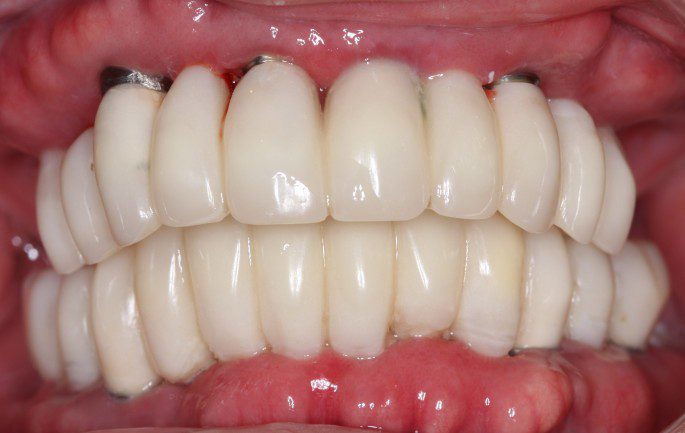
All teeth were extracted, dental implants placed and immediate fixed temporary bridges placed on the day of surgery. This treatment makes All-on-4 look like the minor leagues. Most patients prefer this method over wearing a fixed denture that is offered all the corporate dental implant centers. An All-on-4 treatment does not have normal contours like teeth, does not feel like teeth and the upper teeth often break during chewing. This is far superior.
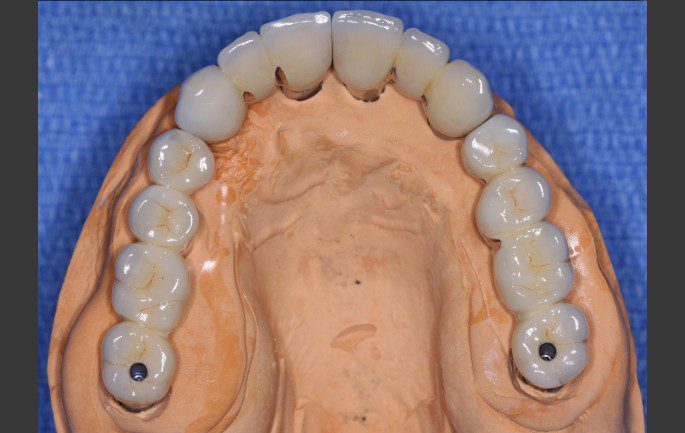
After two months of healing the permanent implant bridges are fabricated at the laboratory. The holes in the back teeth are for micro-screws to hold the prosthesis in while providing "retrievability". This term was invented in implant dentistry. Two problems exist in ALL implant treatments: The abutment screw can get loose. The abutment screw connects the implant to the crown or bridge. The "abutment" is the intermediate part between the implant and the crown. If am abutment screw becomes loose and the crown or bridge is permanently cemented, the only solution is to cut off the permanent restoration, which destroys it. Porcelain can break on any crown or bridge whether it's on a tooth or an implant. Porcelain breakage is slightly more common with implants because implants are more solid than natural teeth. When porcelain breaks on an implant that is permanently cemented to the implant there is no way to repair it. It must be cut off and replaced. Because these two issues are very real possibilities, only rarely do we use permanent cement on implant restorations. The use of screws and temporary cement solve this problem. Screw retention gives us the opportunity to unscrew the crown or bridge and fix whichever problem has occurred. Temporary cement accomplishes the same. We, the dental implant doctors, were pioneers of "retrievability" where temporary cement and screws are almost always used to allow us to keep implant problems small, if occur. Screw holes are always covered with white filling material. This makes them smooth and keeps food out. We do this out of respect for our patients. No one should have to pay twice for a restoration if it is avoidable. Is there a downside to building in "retrievability" in our implant restorations? Yes. Crowns and bridges can become loose when it is not convenient. To address this we give each patient written instructions, a packet of temporary cement and a demonstration on how to manage a loose implant crown if it occurs. The advantage of having a retrievable implant crown or bridge far outweigh the disadvantage of the time and money necessary to correct what could be an easily solved problem.
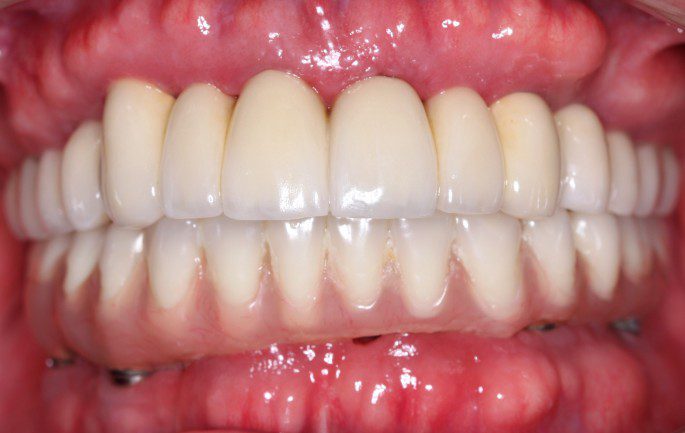
Upper implant bridges in place. Lower hybrid restoration in place. This is a very compatible arrangement. Both arches have "fixed" restorations which means they stay in the mouth or are non-removable. The upper is made of porcelain and the lower is hardened plastic. The occurrence of porcelain fracture is greatly reduced with this combination. When porcelain is placed in both arches, on implants, the chance for fracture is high. This is because porcelain is a very hard, moderately brittle substance and dental implants are more solid than teeth causing the micro-collisions that occur during chewing and grinding to be very stressful to the porcelain.
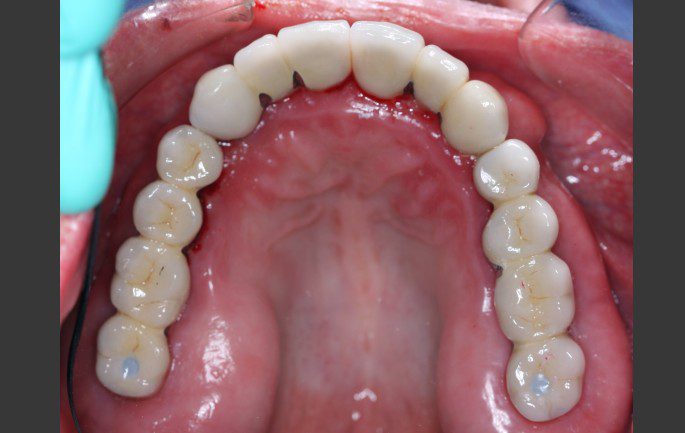
Upper arch, mirror view. Note that the screw holes are covered with a white filling material and are barely visible. All 14 teeth are replaced. Often, we leave out the second molar as it is responsible for only 15% of the chewing surface. Also, by leaving out the second molar it reduces the cost.
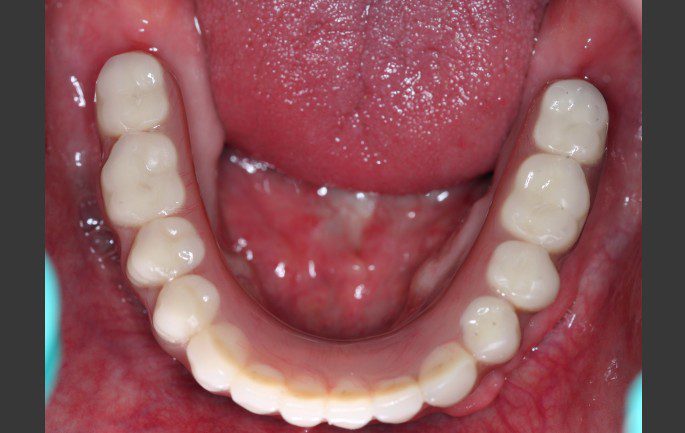
Lower arch, mirror view. Again, 14 teeth but these are the hardened plastic instead of porcelain. The compatibility of materials is created by the plastic being slightly softer than porcelain thereby giving the system a bit of a shock absorber and the plastic teeth yield to the porcelain with a higher wear rate.
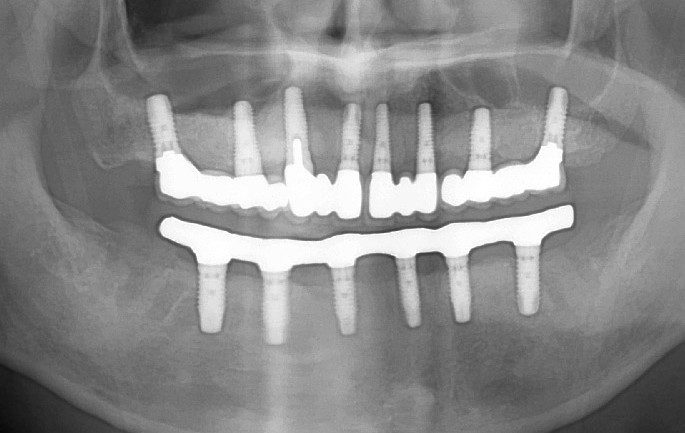
Panoramic x-ray of the final result. Advantages of this treatment type include:Very strong due to multiple implants, type of restorations and design.All restorations are "retrievable" as described above.Upper has four separate segments so any complications or issues can be managed at a small scale instead of an entire arch.Fully restored function, meaning this patient can chew even better than before treatment.Excellent esthetics. Note pictures # 14 and 15. The post-treatment smile is stunning.

